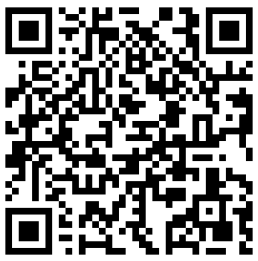ISO 16321-2:2021 for safety goggle, face shield

I – Introduction
II – Main modifications
III – Conclusion
APPENDIX 1 – new tests
APPENDIX 2 – new marking requirements
APPENDIX 3 – new instruction requirements
I) Introduction
*This document specifies general requirements for eye and face protectors, against occupational hazards.
*Transitional period until March 2024.
*Normative references:
ISO 4007 gives the terms and definitions,
ISO 18526 tests methods,
ISO 18527 for specific sports,
ISO 19734, for the selection, use and maintenance of eye and face protectors
II) Modifications
ISO 16321-1 Requirements against common occupational hazards such as impacts from flying particles and fragments, optical radiation, dusts, splashing liquids, molten metals, heat, flame, hot solids, harmful gases, vapours and aerosols
ISO 16321-3 Additional requirements for mesh protectors.
Change in the state of the art.
Many modified requirements and associated test methods (see Appendix).
III) Conclusion
The ISO 16321 series was developed following a general request to establish minimum requirements and test methods for eye and face protectors, internationally marketed.
The protectors certified according to EN 166:2002, will no longer comply with the applicable essential health and safety requirements, in March 2024 (subject to the publication in the Official Journal of the European Union).
Each request for a re certification according ISO 16321 series, for a PPE that conforms to EN 166, will be considered on a case-by-case basis.
To be conform to EN ISO 16321-2:2021, the following requirements according the ISO 16321-1:2021 shall be met: art. 4.2 to 4.6, art. 5.2, art. 6.1, art. 6.4, art. 7.2 to 7.4, art. 7.7 to 7.11
APPENDIX 1
New tests:
Attention: non-exhaustive list as it does not include modified associated test methods
4.3.1 Transmittance requirements and scale numbers
4.4 Automatic welding filters
4.4.4 Variation in luminous transmittance for automatic welding filters
4.4.5 Switching time and holding time of automatic welding filters
4.4.6 Manual control of dark shade number
4.4.7 Resistance to thermal exposure of automatic welding filters
4.4.8 Optical sensitivity of welding arc detection by automatic welding filters (Optional requirement)
4.4.9 Resistance to surface damage due to fine flying particles (Optional requirement)
5.1 Optical requirements
5.2.1 Area to be protected for welding helmets
5.2.2 Light tightness of welding protectors
APPENDIX 2
Mandatory markings on welding filters:
c) filtering performance code letter (W, etc.);
e) automatic welding filter angular dependence class V1, V2 or V3, C1, C2 or C3, if applicable..
Mandatory markings on welding protectors except for welding filters/
c) filtering performance code letter (W, etc.);
f) applicable head size:
Optional markings on welding filters:
b) extremes of temperature for mechanical and optical tests;
c) code letter for detection of signal lights, if applicable;
d) optical sensitivity of welding detection of automatic welding filters (+TIG).
Optional markings on welding protectors except for welding filters:
b) extremes of temperature for mechanical tests;
c) resistance to molten metals and hot solids;
d) protection against radiant heat.

APPENDIX 3
Information to be supplied by the manufacturer:
f) details of the field of use, ambient range of intended use, protection capabilities and performance characteristics;
g) the applicable headforms according to ISO 18526-4, e.g. "This protector is appropriate for the headform 1-S." This information shall be in the form of either markings on the frame, see 6.5, or separate information on labels, packaging, hang tags, etc., that accompanies the protector at the point of sale.
i) details of any aspects of performance that have been assessed at extreme of temperatures and the corresponding temperature limits;
our advantages:
- HUIIMO GROUP SHANGHAI LTD is the only partner of German ECS GmbH Announcement No.:(1883). The quotation for testing and certification fees comes completely from our German headquarters and there is no additional service fee.
- ECS GmbH can not only provide CE testing and certification for customers, but also provide customers with a series of testing and certification work such as ANSI, CSA, AS/NZS, etc. ECS GmbH is a laboratory authorized by SAI Global in Australia, and its test reports can be recognized by SAI Global.
- We provide the most competitive quotation for testing and certification for Asian customers (especially Chinese customers). Without increasing samples, we can perform CE ANSI CSA AS/NZS testing at the same time, and the total test cost can be greatly reduced.
- We provide customers with a variety of preferential programs and value-added services, more details, please contact us.
Remarks:
ECS GmbH is a certification body approved by the German State Department of Safety and Technical Supervision (ZLS). The scope of its work is mainly related to the detection and certification of any welding and laser radiation protection products. It is a professional EU certification body for eye protection devices in PPE (Announcement No.: 1883). For more information, please see ECS GmbH

